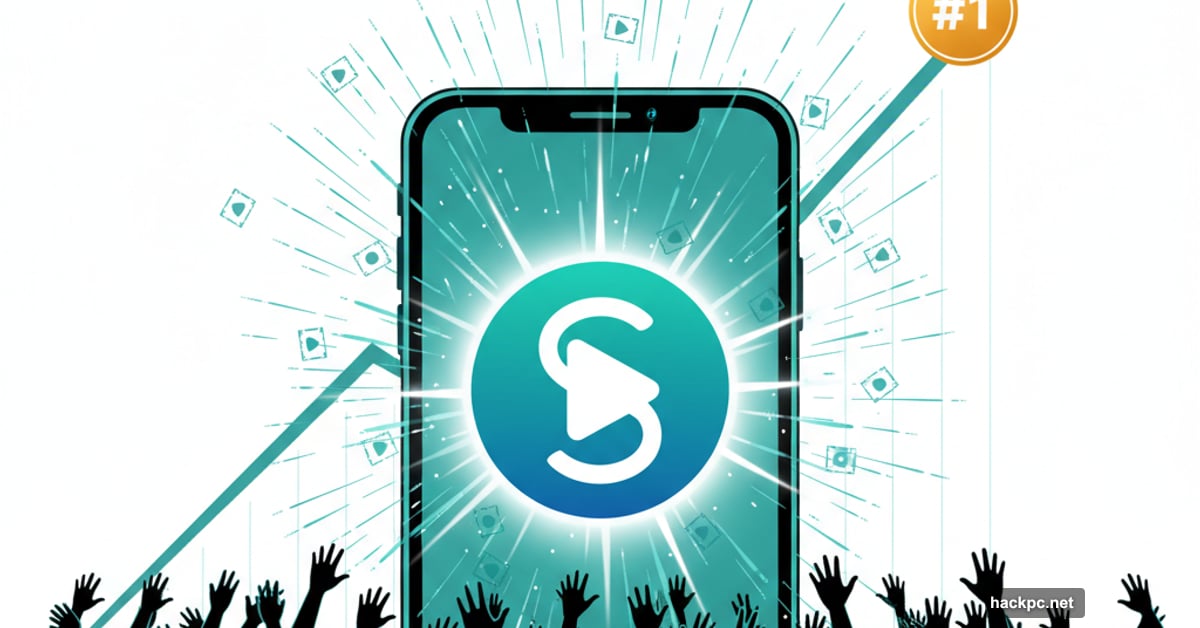
OpenAI just claimed the top spot in Apple’s App Store. Not with ChatGPT, but with something newer and potentially more disruptive.
Sora launched Tuesday as an invite-only iOS app for generating short-form AI videos. Within days, it rocketed past Google Gemini and even OpenAI’s own ChatGPT to become the most downloaded free app on the platform. That’s remarkable considering you can’t just download it and start using it immediately.
The app’s explosive popularity reveals something important. People don’t just want to chat with AI anymore. They want to create with it.
Why Everyone’s Fighting for Sora Access
The invite system creates artificial scarcity. You need a code to get in. Yet that exclusivity seems to be driving demand rather than killing it.
Sora lets users generate AI videos from text prompts. But here’s where it gets interesting. You can also remix videos other users created and share everything to a public feed. So it’s part creation tool, part social network.
Bill Peebles, who leads the Sora team at OpenAI, posted Friday that the response has been “epic.” He said the team is iterating quickly based on user feedback. Translation: they’re moving fast to capitalize on this momentum.
The app runs on Sora 2, OpenAI’s latest video and audio generation model. OpenAI claims it creates scenes and sounds with “a high degree of realism.” That’s marketing speak, but early videos suggest the tech has improved significantly since the first Sora model launched in February 2024.
The Shoplifting Video That Started a Debate
Not everyone’s thrilled about Sora’s capabilities. One early video depicted CEO Sam Altman shoplifting. Another showed realistic but completely fabricated scenarios. These examples sparked immediate questions about the app’s potential for harm.
Altman acknowledged the concerns Tuesday in a post on X. He warned about the “degenerate case” where AI video generation devolves into an endless feed of algorithmic garbage optimized purely for engagement.
“The team has put great care and thought into trying to figure out how to make a delightful product that doesn’t fall into that trap,” Altman wrote. He mentioned “a number of promising ideas” but didn’t specify what those are.
OpenAI says it built safety features into Sora. Users have explicit control over how their likeness appears on the platform. But early evidence suggests these guardrails face serious stress tests. Photorealistic videos of public figures doing things they never did represent obvious risks.
Plus, the legal landscape remains murky. Does creating a fake video of someone constitute defamation? What about copyright when you remix another user’s AI-generated content? These questions don’t have clear answers yet.
iOS Only and Invite-Based Still Tops Charts
Here’s what makes Sora’s App Store dominance even more impressive. The app works exclusively on iOS devices. No Android version exists yet. And you can’t just download it like ChatGPT or Gemini.
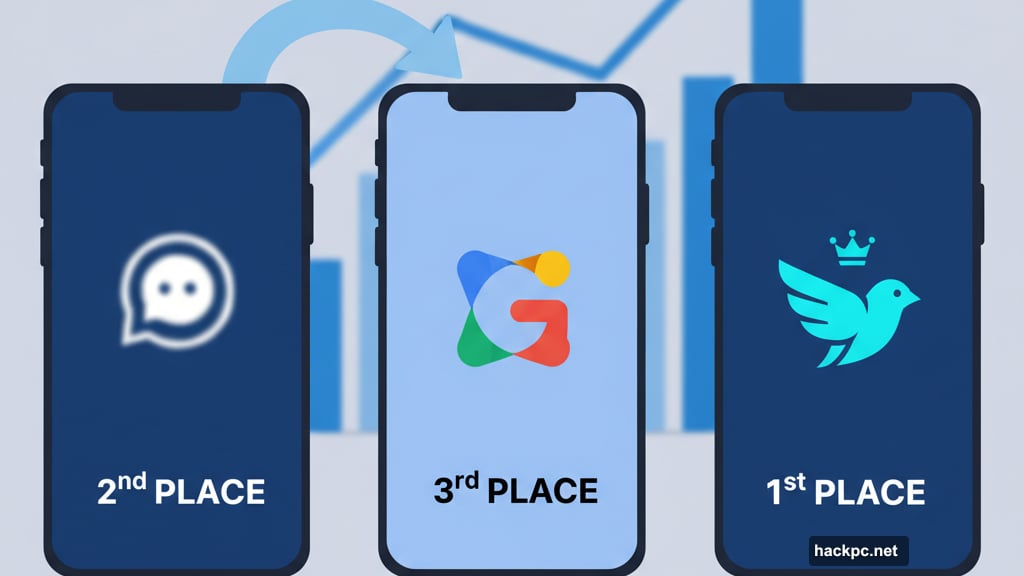
Despite these limitations, Sora claimed the No. 1 free app spot ahead of two products with far fewer barriers to entry. Google’s Gemini works on any device with a web browser. ChatGPT does too, plus it has apps on multiple platforms.
This suggests pent-up demand for AI video generation specifically. ChatGPT proved people wanted conversational AI. Sora’s early success hints that creative tools might drive the next wave of AI adoption.
The invite system probably helps rather than hurts right now. Exclusivity makes people want access more. Every locked door looks more appealing than an open one. But OpenAI will eventually need to open this up widely or risk competitors eating their lunch.
Several other companies are racing to ship similar video generation tools. Google, Meta, and numerous startups are all working on this problem. OpenAI moved fast to capture mindshare first, but maintaining that lead requires broader access.
The Social Feed Changes Everything
Most AI tools focus purely on generation. You type a prompt, get a result, move on. Sora adds a social layer that could prove more significant than the video generation itself.
Users can share their creations to a public feed. Others can view, remix, and build on that content. This creates a networked effect where the platform becomes more valuable as more people use it.
It also raises the stakes for content moderation. A private tool generating videos for individual users presents manageable risks. A public platform where realistic fake videos spread socially? That’s a different beast entirely.
OpenAI’s moderation challenges with ChatGPT pale compared to what video content will require. Text is relatively easy to scan for policy violations. Video contains far more dimensions to monitor: visual content, audio, context, intent. Automating this at scale represents a genuine technical challenge.
Moreover, the remix feature complicates attribution and accountability. If someone creates a problematic video and others remix it dozens of times, who’s responsible? The original creator? The remixers? The platform? These questions will shape how AI video platforms evolve.
What This Means for Google and Meta
Google’s Gemini sitting at No. 2 in the App Store looks less impressive when you consider it’s available to everyone immediately. Sora’s invite-only status makes its top ranking even more noteworthy.
Google has been working on video generation capabilities too. They’ve demoed impressive results but haven’t shipped a consumer product yet. Sora’s launch might accelerate their timeline. Nobody at Google wants to watch OpenAI dominate another AI category after losing the chatbot race to ChatGPT.
Meta faces similar pressure. They’ve invested billions in AI infrastructure and research. But they’ve shipped fewer consumer-facing products that capture mainstream attention. Instagram and Facebook users represent massive distribution for an AI video tool, if Meta executes well.
The challenge for both companies: OpenAI moved first and grabbed mindshare. Even if competitors ship superior products later, they’ll fight uphill against the perception that Sora defined the category.
Apple’s position gets interesting too. They control the App Store and could theoretically build video generation directly into iOS. But they’ve been more cautious about generative AI than their competitors. Watching a third-party app top their charts might change that calculus.
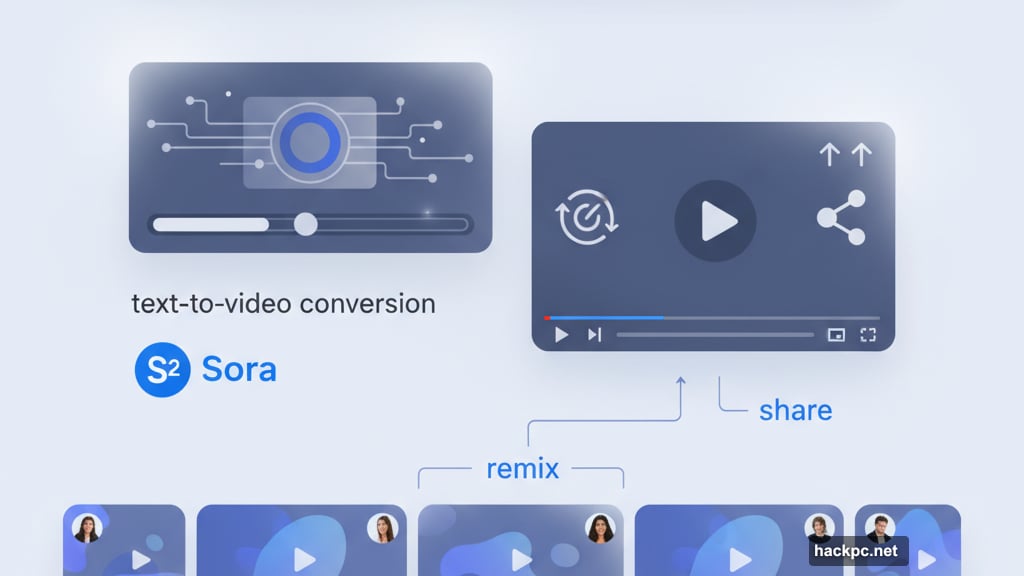
Reality Check on the Hype
Sora’s App Store success doesn’t guarantee long-term dominance. Remember Clubhouse? It topped the charts too, driven by invite-only exclusivity. Then broader access revealed the product wasn’t as compelling as the hype suggested.
The same could happen here. Once everyone has access, will people actually use Sora regularly? Or will it become another novelty that generates initial excitement but limited sustained engagement?
Early adopters often behave differently than mainstream users. The people fighting for Sora invites right now likely skew toward tech enthusiasts and creators. They’ll experiment extensively and push the product’s boundaries. But will regular consumers find daily use cases?
Short-form video already saturated the market through TikTok, Instagram Reels, and YouTube Shorts. AI-generated content needs to offer something meaningfully different to carve out space. Just being “made by AI” isn’t enough of a value proposition for most people.
The quality matters too. If Sora’s videos look obviously artificial or fail to match user intentions reliably, adoption will stall. Early demos look impressive but controlled. Real-world usage at scale often reveals limitations that marketing materials hide.
The Broader Trend Worth Watching
Look past Sora specifically. The real story is how quickly AI moved from text to images to video. ChatGPT launched just over two years ago. Now we’re casually generating photorealistic video clips from text prompts.
This progression isn’t stopping. Audio generation improved dramatically. Video is getting there. Next comes longer-form content, real-time generation, and eventually fully AI-created movies or shows.
Each step raises new questions about creativity, authenticity, copyright, and truth. We’re racing to build these capabilities faster than we’re developing frameworks to govern them. That gap creates risk.
But it also creates opportunity. Creators who master these tools early will have advantages. Companies that figure out legitimate use cases will build defensible businesses. Regulators who act thoughtfully can shape development toward beneficial outcomes.
The key word: thoughtfully. Rushing to regulate based on hypothetical harms could strangle innovation. Waiting too long could allow real harms to proliferate. Finding the right balance requires understanding the technology deeply and anticipating second-order effects accurately.
Sora topping the App Store signals we’re entering a new phase of AI adoption. Not just chatbots anymore. Full multimedia creation at consumer scale. That future arrived faster than most people expected.
Whether it proves as transformative as the hype suggests or becomes a cautionary tale about moving too fast remains to be seen. But one thing’s certain: millions of people want to find out firsthand. That’s why they’re clamoring for invites to an app most hadn’t heard of a week ago.

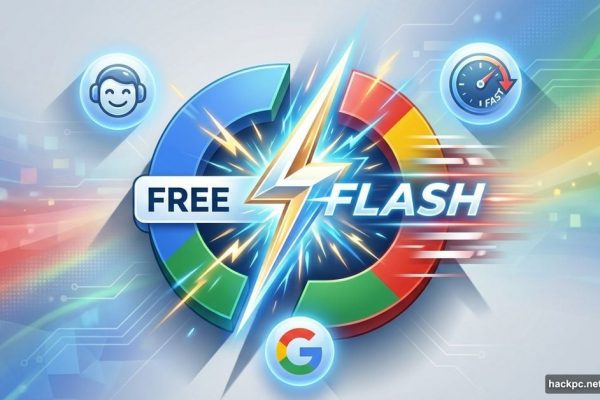
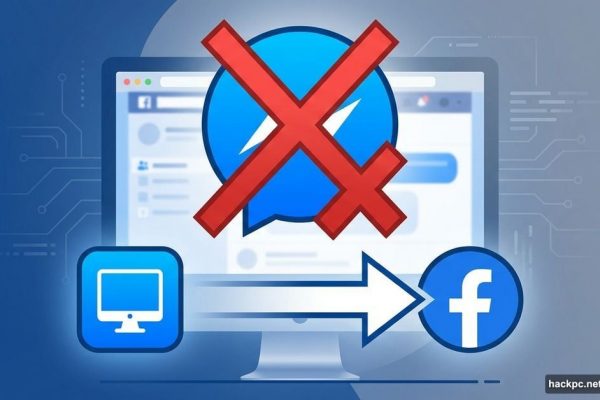
Comments (0)